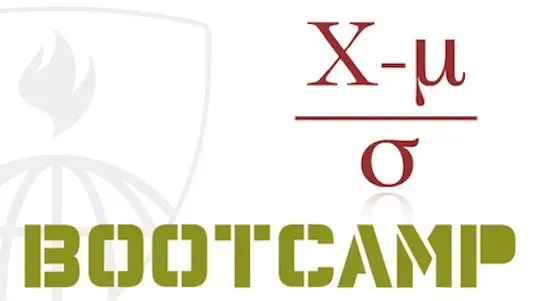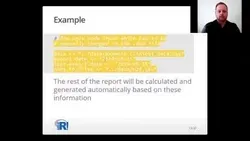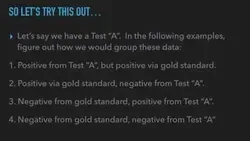
Mathematical Biostatistics Boot Camp 1

This boot camp provides an introductory level of mathematical biostatistics for students with college-level mathematical training, including calculus and optional linear algebra and programming. Participants will gain a working knowledge of fundamental probability and statistical concepts used in data analysis.▼
Course Feature
![]() Cost:
Cost:
Free
![]() Provider:
Provider:
Coursera
![]() Certificate:
Certificate:
Paid Certification
![]() Language:
Language:
English
![]() Start Date:
Start Date:
24th Jul, 2023
Course Overview
❗The content presented here is sourced directly from Coursera platform. For comprehensive course details, including enrollment information, simply click on the 'Go to class' link on our website.
Updated in [March 06th, 2023]
Mathematical Biostatistics Boot Camp 1 is an introductory course designed to provide students with a junior or senior college-level mathematical background with the fundamental probability and statistical concepts used in elementary data analysis. The course will cover topics such as probability distributions, hypothesis testing, linear regression, and more. A small amount of linear algebra and programming knowledge is beneficial, but not required. Upon completion of the course, students will have a better understanding of the mathematical and statistical principles used in data analysis.
[Applications]
The application of this course can be seen in a variety of fields, such as public health, epidemiology, biostatistics, and clinical research. Students can use the concepts learned in this course to analyze data, develop models, and interpret results. Additionally, students can apply the knowledge gained in this course to design experiments, evaluate results, and make decisions based on the data. Furthermore, students can use the skills acquired in this course to develop and implement statistical software for data analysis.
[Career Paths]
1. Data Scientist: Data Scientists are responsible for collecting, analyzing, and interpreting large amounts of data to identify trends and patterns. They use their findings to develop strategies and solutions to improve business operations. Data Scientists are in high demand due to the increasing need for data-driven decision making.
2. Biostatistician: Biostatisticians use mathematical and statistical methods to analyze data related to biological and medical research. They are responsible for designing experiments, collecting data, and interpreting results. They also develop models to predict outcomes and provide advice on the best course of action.
3. Epidemiologist: Epidemiologists use mathematical and statistical methods to study the spread of diseases and other health-related issues. They analyze data to identify risk factors and develop strategies to prevent and control the spread of diseases.
4. Clinical Research Associate: Clinical Research Associates are responsible for designing, conducting, and monitoring clinical trials. They use their knowledge of mathematics and statistics to analyze data and interpret results. They also provide guidance on the best course of action for clinical trials.
[Education Paths]
1. Bachelor of Science in Biostatistics: This degree program provides students with a comprehensive understanding of the principles of biostatistics, including the design and analysis of experiments, the development of statistical models, and the interpretation of data. Students will also learn how to apply biostatistical methods to solve real-world problems in the health sciences, public health, and other fields. This degree is becoming increasingly popular as the demand for biostatisticians grows in the health care and research industries.
2. Master of Science in Biostatistics: This degree program provides students with a more advanced understanding of biostatistical methods and their applications. Students will learn how to develop and apply statistical models to analyze data from a variety of sources, including clinical trials, epidemiological studies, and public health surveys. This degree is becoming increasingly popular as the demand for biostatisticians grows in the health care and research industries.
3. Doctor of Philosophy in Biostatistics: This degree program provides students with a comprehensive understanding of the principles of biostatistics, including the design and analysis of experiments, the development of statistical models, and the interpretation of data. Students will also learn how to apply biostatistical methods to solve real-world problems in the health sciences, public health, and other fields. This degree is becoming increasingly popular as the demand for biostatisticians grows in the health care and research industries.
4. Master of Public Health in Biostatistics: This degree program provides students with a comprehensive understanding of the principles of biostatistics, including the design and analysis of experiments, the development of statistical models, and the interpretation of data. Students will also learn how to apply biostatistical methods to solve real-world problems in the health sciences, public health, and other fields. This degree is becoming increasingly popular as the demand for biostatisticians grows in the health care and research industries.
Pros & Cons
-

1. In-depth coverage of biostatistics fundamentals and key formulas.
-

2. Valuable and insightful information for learners with a solid mathematical foundation.
-

3. Offers opportunities for note-taking and revisiting lectures for future reference.
-

4. Provides a basic understanding of statistics with a high school-level math background.
-

5. Challenging assignments that reinforce concepts and develop practical skills.
-

6. Brian Caffo is highly regarded as an excellent statistics teacher.
-

1. Lack of engagement and visual aids in lectures.
-

2. Difficulty for learners without a background in calculus or linear algebra.
-

3. Insufficient examples, exercises, and explanations for some concepts.
-

4. Limited focus on the application of biostatistics in real-world contexts.
-

5. Inadequate forum support and absence of solutions for assignments.
-

6. Lectures may feel monotonous with extensive reliance on slides.
Course Provider





